Project Design Documentation:
SolidWorks was used for panel design and AutoCAD was used for electrical schematics.
Reports can be downloaded below:
- Drawing Package
- Electrical Schematics
- HMI Graphics Report (Graphics built in C-more HMI software)
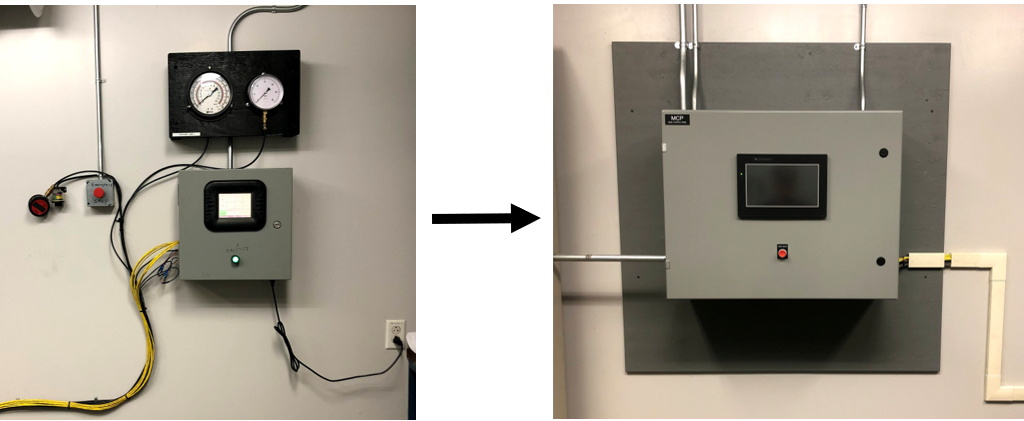
This project consisted of the design and build of an updated industrial blower testing system for D&W Diesel in Auburn NY. The system needed to control the backpressure load on a variety of Gardner Denver blowers with the purpose of bringing the blowers to operating temperature.
The old system required an operator to stand in the room throughout the 60min test and operate a manual gate valve to increase the back pressure on the blower.
Project Goal: Design a system that will allow test operators to remain outside the blower testing room throughout the test. This is to eliminate safety risks that come with being in such close proximity to the running blower for long periods of time.
System Architecture: The system includes 2 HMIs, 1 PLC, and an actuated valve.
Scope of Work:
Project Outcome: The system provided an increased level of testing accuracy, increased safety, and provided a financial benefit to the company.
The automated test allowed operators to work on other projects during the blower testing process.
The time return on investment was calculated to be 10 months and the system increased blower production by 7% per year.
Additional System Images:
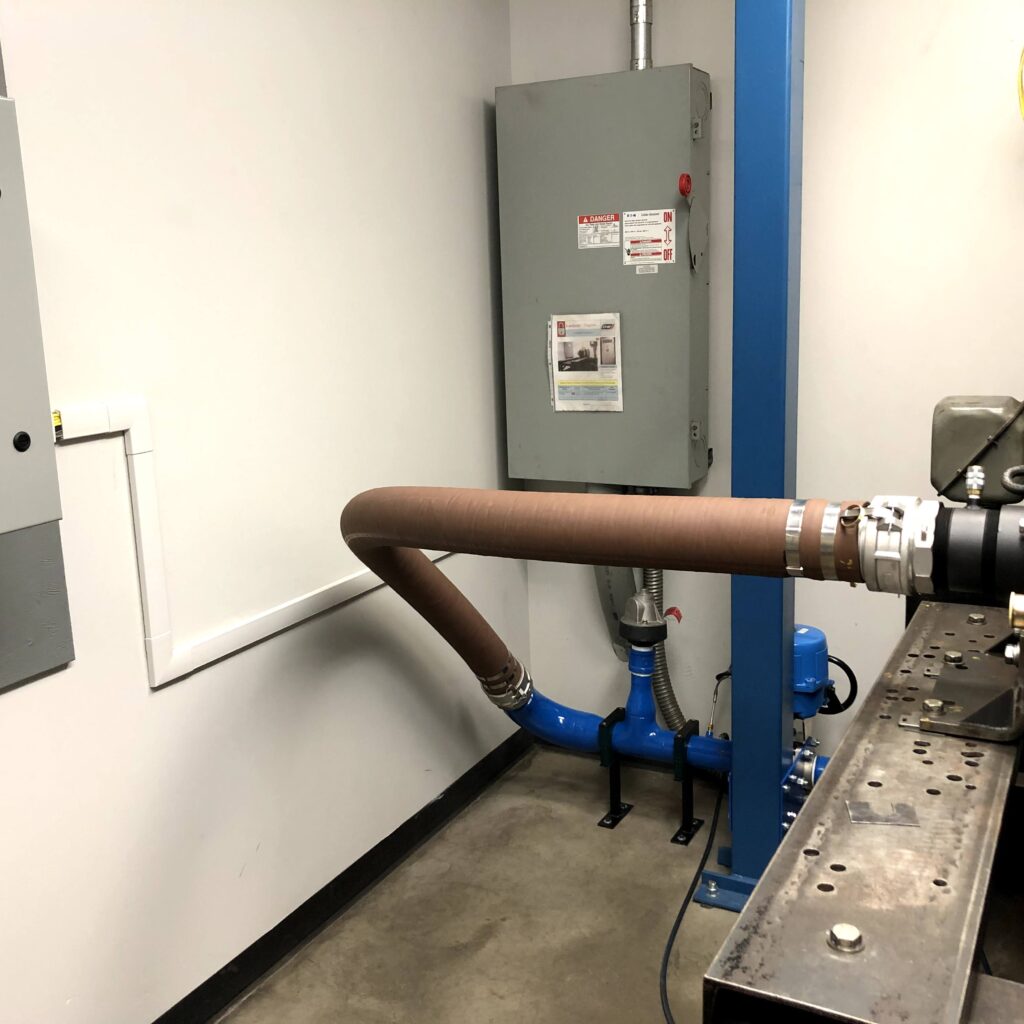
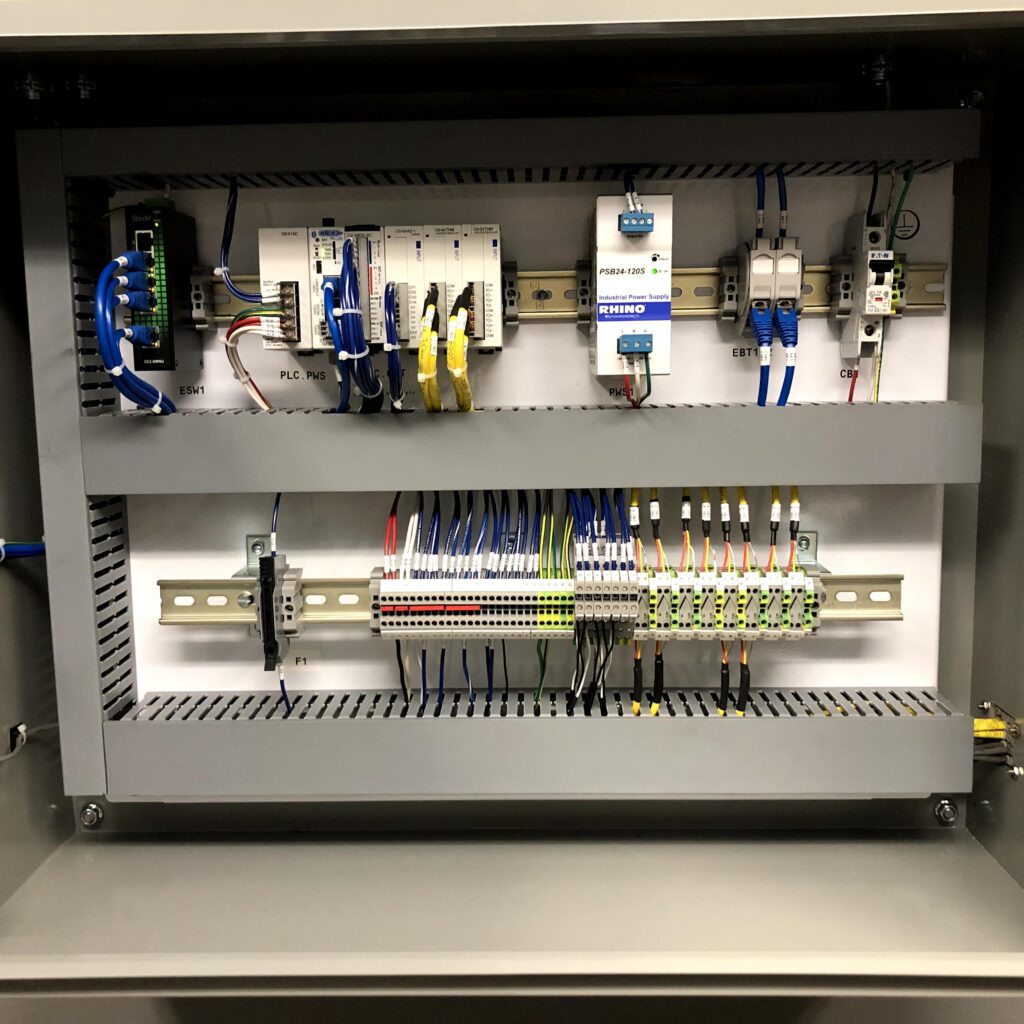
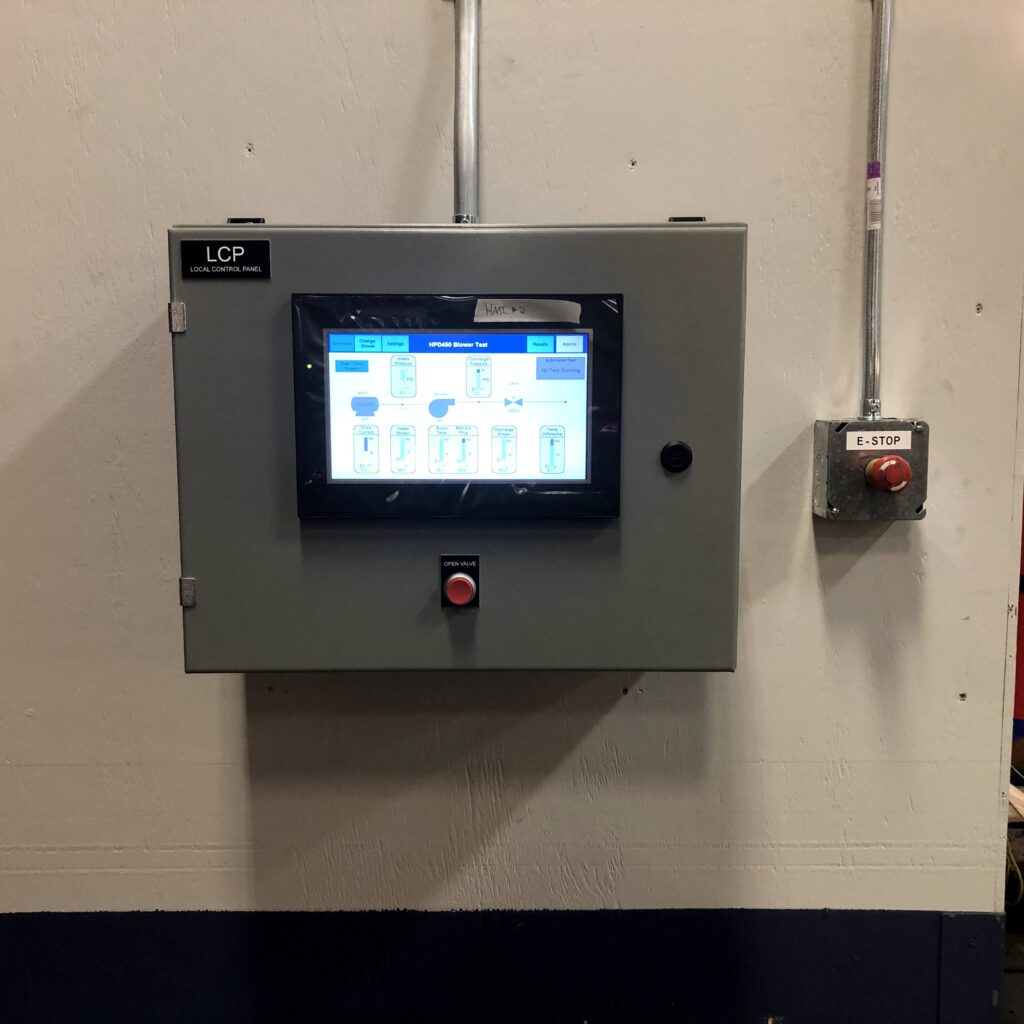
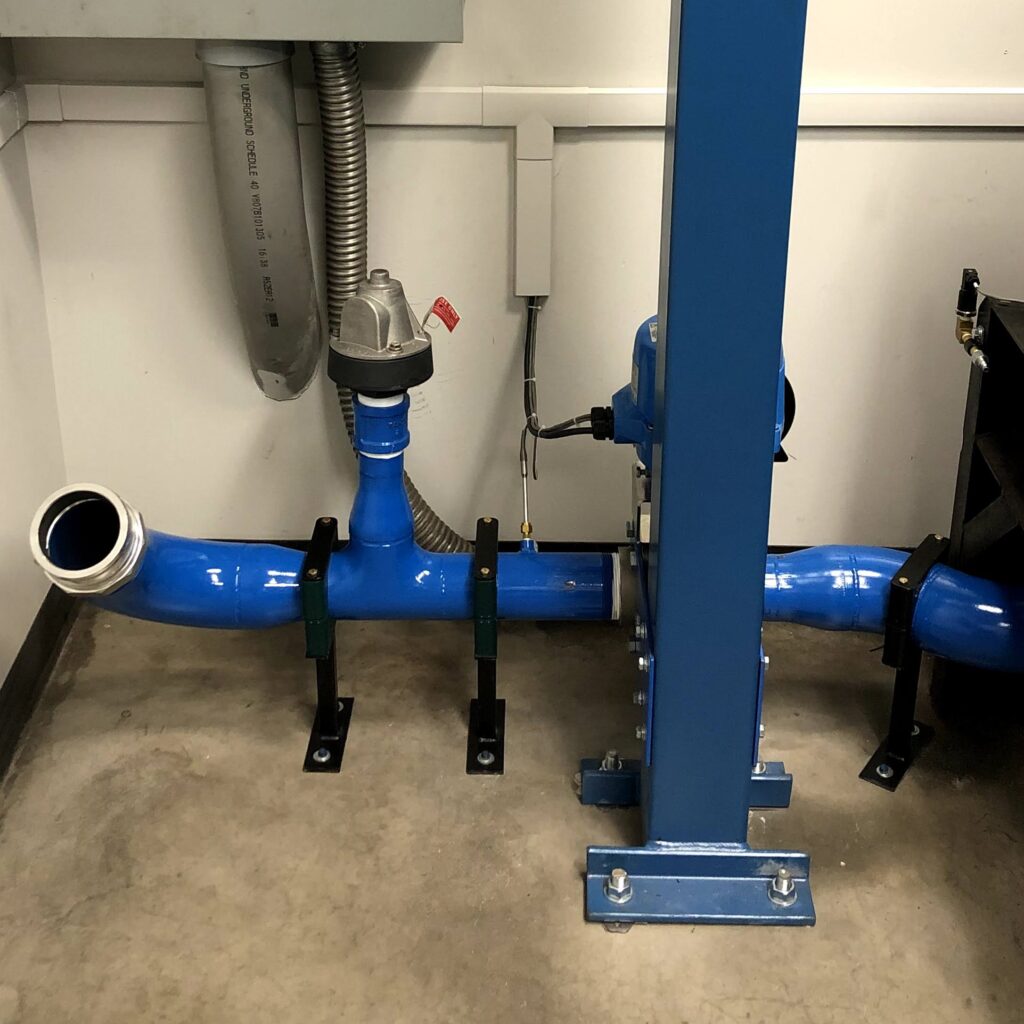
Project Design Documentation:
SolidWorks was used for panel design and AutoCAD was used for electrical schematics.
Reports can be downloaded below:
This PID tuning for this project was by far the most challenging part due to the slow response of the electronic actuated valve and the noisy discharge pressure readings that were used as the process variable.
A moving average filter was built into the PLC program to help reduce the noise in the pressure signal which worked well. Overall the system performed well other than slight overshoot at the 16 PSI setpoint.
September 4, 2022 Pete VanCamp Projects
© 2024 petervancamp . All rights reserved.